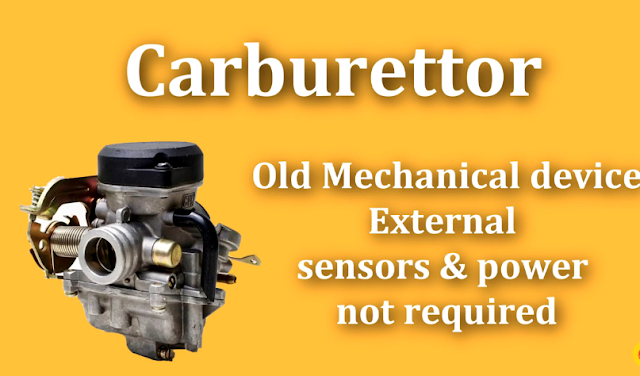Between the combustion systems for motorcycles there are 2 big differences for the supply of air and fuel to the engine. These two systems are the Carburetor and the Electronic Injection. And so that you know what its function really is on your motorcycle, in your Moto Magazine we took on the task of creating this report on these two systems.
The main difference between a carburetor and fuel injection is that the carburetor works at low pressure since through it the air and fuel mixture are admitted, while the injection atomizes the fuel by the force of pumping it. through a small high pressure nozzle eliminating cold start problems commonly associated with carburettors.
At first, the electronic injection system was very expensive due to its maintenance, and because not many mechanics did this installation, however currently this system has almost completely replaced the carburettors, in addition to the fact that most motorcycles already include the system. injection and in terms of costs, this is very low.
Now, to fully understand the difference between these two combustion systems for motorcycles, it is necessary to understand how each of them works and from there start with the benefits they provide to your engine:
How does the injection system work?
The Electronic Injection system doses the mixture between fuel and air, which achieves combustion and lowers the emission of toxic gases in the most efficient way for your engine.
The Electronic Control Unit ECU is a microcomputer or processor that calculates and supplies exactly the amount of air that enters the engine, and for this the ECU needs information from the group of sensors, which are found in the throttle body. and the engine.
The set of emission air pressure, temperature, throttle position and engine temperature sensors are responsible for sending information to the ECU, which determines the amount of fuel that is injected into the engine, energizing the pump. fuel and injector.
The pump takes the fuel from the tank, sending it under pressure through the hose, after that the electronic control unit now energizes the injector, controlling the opening time.
The injector has holes at its ends that when the fuel passes under pressure through them, it is atomized and thus the amount of air accumulated by the throttle body and the precise amount of fuel injected are at the inlet of the intake valve.
Here those responsible for supplying the right fuel are: the fuel pump and the air / fuel control unit. Thus ending the process of the electronic injection fuel supply system.
How does a carburetion system work?
As we said, the carburetor allows the mixture of gasoline and air in older engines, a process that is carried out before passing to the intake manifold. The gasoline passes from the pump to a reservoir in the carburetor, which has a float, where the level of gasoline is regulated in a U-shaped tube, and which goes to a hole through which the air enters the engine.
This hole is called the carburetor diffuser; which narrows at the end causing the air speed to increase at that point.
When moving quickly, the air absorbs everything that is around it, including the gasoline in the tank, which, mixed with the air, passes into the combustion chambers.
The diffuser has a butterfly that, when opened, enters more air from the circulating air and absorbs more gasoline.
The mixture dosing system consists of 4 sub-systems:
Venturi or diffuser
Constant level tank
Butterfly valve
Mixing compensators
There are several advantages that the injection system has over the carburetor system, here we mention some of them.
Very smooth and regular operation of the engine, due to the better distribution of the mixture in the cylinder.
Very exact fuel consumption, since the amount of fuel injected is very precise, not like in the carburetor system.
Insensitivity to gravity or flight actions, since it does not have a float system that can be affected.
Lower fuel consumption, due to better utilization and greater precision in the system.
Higher overall system reliability.
Also, You May Like:
1. What are and how do motorcycle GPS locators work?





0 Comments